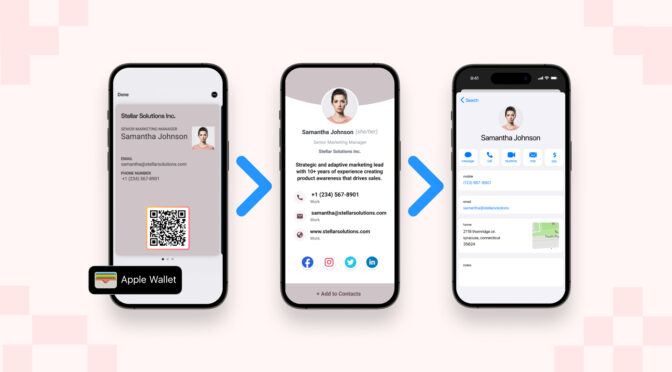Today’s consumers want to make informed decisions, and they expect brands to deliver the information they need to do so—before they know they need it. This can be a challenge as customers move through the digital and physical worlds in real-time with their mobile devices in hand.
With Phygital marketing tools, you can quickly communicate updates that are relevant, timely, and tailored to that customer’s personal preferences.
These tools give customers a clear way to communicate with your staff when they’re ready to collect their curbside pickup order, and they give your staff the tools they need to pre-empt that customer’s outreach and exceed their expectations.
Here are three ways to deliver up-to-date information and exceptional customer experiences using Phygital marketing.
1. Establish your Phygital framework now
You can’t just deploy a Phygital solution and expect customer engagement. You need to make sure each tool you use is clearly tied to your branding and that it meets your safety standards.
If customers don’t feel they can engage safely with your brand when they’re prompted to scan a QR Code in your store or on an advertisement, they often won’t.
This is why you need to educate your customer base on how to recognize signs of safe brand outreach and make sure they come to expect your brand to be accessible to them, wherever and whenever they’re ready to engage.
LEARN: How to ensure a secure Phygital experience for your customers
More than 70 percent of consumers already expect to have personalized interactions with brands. This means there’s no time to waste in acquiring the digital marketing tools you need to connect your customers’ online and offline interactions with your brand.
By clearly communicating that you’re among the brands that have the tools to deliver those experiences and safely meet customers where they are, you can earn or increase customer loyalty at every touchpoint.
2. Use dynamic QR Codes to deliver the information your audience is looking for
Even in today’s increasingly digital landscape, there’s value in printed materials, like billboards, flyers, receipts, and brochures. They don’t require a smartphone to access, and quickly garner many views in public.
However, the limits to the impact of printed collateral are well known: they can be costly, it’s tough to ensure the right audience sees them, and once they’ve shipped, you can’t make any changes.
Today, you can maximize the value of this printed collateral by including a dynamic QR Code that can help you overcome these barriers. With dynamic QR, you can:
- Keep digital collateral up-to-date, even after the printed material has been distributed.
- Give interested parties a way to connect with your brand and share data.
- Use data from each scan to better understand who this collateral reached and refine future marketing campaigns.
But dynamic QR Codes don’t just help marketers update their messaging. This technology also ensures customers get the information they need to make informed decisions at their own convenience.
For example, with a quick scan of a dynamic QR Code, a customer might learn that organizers changed the venue of an event due to inclement weather and receive directions to the new address. Then, they can decide whether to attend or request a refund on the spot. By giving this customer the tools they needed to make that decision, the event organizer banked more of that customer’s trust and loyalty.

Adding QR Codes to your collateral promotes accessibility, as well. If customers can’t or don’t feel comfortable speaking with employees in person, a dynamic QR Code gives them a way to get the information they need on their own time and in a way that works for them.
This helps brands engage with a wider portion of their potential customer base and ultimately, capture more data to better understand what their audience is looking for.
RELATED: Learn how to maximize the potential of your receipts with QR Codes on them.
3. Track emerging customer needs with integrated platforms
The difference between static and dynamic QR Codes is simple from a marketing point of view:
- You can’t implement backend changes to static QR Codes once they’ve been created.
- Static QR Codes are not trackable.
- You can’t use static QR Codes for retargeting online.
But you can do all these things and more with a dynamic QR.
Dynamic QR Codes create opportunities for data tracking by capturing the number of unique scans, location, date, device, and time of scans. This wealth of data can be invaluable for businesses that rely on efficient logistics and delivery. For instance, by analyzing scan locations, you can identify patterns in customer demand across regions, enabling you to optimize your delivery routes. This not only reduces travel time and fuel costs but also ensures faster deliveries, improving customer satisfaction and operational efficiency. When paired with Uniqode’s Google Analytics integration, a dynamic QR can also secure information around end-user demographics and monitor user interests.
To unlock these benefits, you need a digital marketing platform that’s built to share data, track customer preferences, and secure your customer’s data. This last element is particularly important, as a growing number of privacy laws are being introduced across the US and globally.
To effectively track your customers’ needs as they change, you need partners who can keep up with your audience’s data privacy and security concerns. So, as you consider MarTech providers, vet your partners to ensure they meet your security requirements, perhaps including SOC 2 compliance and the standards for data privacy where you and your consumers are located.
Future-proof your brand with Phygital marketing
Phygital marketing tools give you the power to deliver a well-rounded customer experience that accounts for each customer’s personal preferences and timely concerns. Instead of being a nice-to-have part of your marketing tech stack, the ability to derive customer insights from geofencing and dynamic QR Codes is becoming part of a new baseline that’s redefining customer expectations.
According to a 2021 McKinsey study, nearly 50 percent of consumers prefer physical experience. There was also a 750 percent increase in QR Code use from 2019 to 2021. While both numbers were doubtless impacted by the ongoing pandemic, they show that customers are rapidly adjusting their expectations for how they’ll interact with brands.
To learn more about how you can upgrade your marketing tech stack to meet your audience where they are, schedule a free demo of Uniqode’s QR platform.
Enabling digital connections with every physical object and place on the planet









